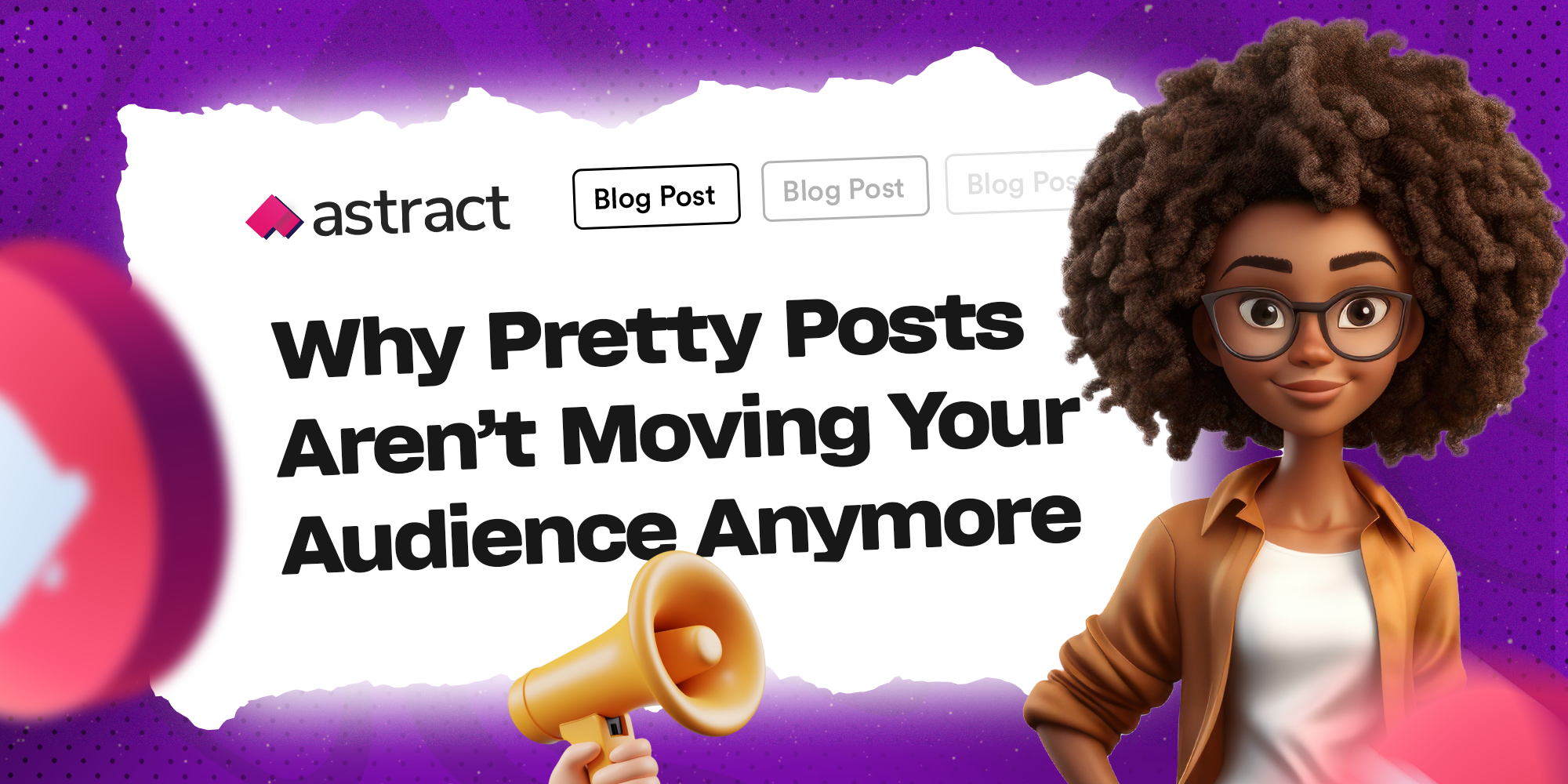In this post, we’ll uncover common branding mistakes small businesses make and, most importantly, how to fix branding mistakes so you can build a brand that stands out.
Branding is important because it defines the perception people have about your brand and it is this perception that drives interest and purchase. As Jeff Bezos once said, “Your brand is what people say about you when you’re not in the room.” And if your brand is confusing, forgettable, or inconsistent, potential customers will simply move on.
Read on as we explore some common branding mistakes and tips to fix them.

7 Common Branding Mistakes Businesses Make
Many small business owners struggle with branding without even realizing it. Here are some of the most common branding mistakes and how to fix them:
1: Mimicking Competitors Instead of Creating a Unique Identity
It’s tempting to copy what’s working for bigger brands in your industry. After all, they’re successful, right? But here’s the thing: if your brand looks, sounds, or feels exactly like your competitors, why should customers choose you?
It’s natural to look at successful brands in your industry for inspiration. But copying their branding, tone, or design is a huge mistake. Customers don’t need another version of an existing brand—they need something unique. When you copy others, customers struggle to see what makes you different, and you may even appear like a dupe. You will also attract the wrong audience because your branding isn’t authentic.
How to Create a Memorable Brand Instead:
- Find your unique value proposition (UVP): What sets you apart? Maybe it’s personalized customer service, eco-friendly packaging, or a bold brand personality. Focus on your customers’ needs rather than just competing.
- Develop a brand voice that’s your own: Whether witty, professional, or inspiring, make sure your messaging feels distinct.
- Invest in unique branding elements: Work with a professional designer to create visuals that reflect your brand’s identity—not your competitor’s.

2. DIY Branding Instead of Hiring a Pro
We understand that running a business is expensive, and branding might seem like a “do-it-yourself” task. But designing your own logo in Canva or picking random brand colors without a strategy is one of the common branding mistakes that can backfire. A poorly designed logo, inconsistent color palette, or generic templates can make your brand look unprofessional, and your brand’s visual identity is too important to leave to chance.
Think about it: Would you trust a tech company with a logo that looks like a child’s doodle? Or buy insurance from a brand using Comic Sans font? Your branding sets the tone for how people perceive you.
How to Fix This:
- Invest in professional branding services (yes, Astract can help!) to create a polished, cohesive look across all platforms so that people recognize it’s you before they see it’s you.
- If you must DIY, at least follow branding best practices and use professional templates.
- Get feedback! Sometimes, an outside perspective will catch mistakes you’ve overlooked. Invest in professional design services at maintain consistency.
At Astract9, we specialize in branding strategies for startups that ensure your business looks polished, credible, and cohesive across all platforms.
3. Neglecting Market Research Before Branding
Many small business owners skip market research, assuming they “know” their audience. But without real data, you’re essentially guessing and that can lead to branding mistakes that hurt your business.
If you don’t know who your customers are, what they want, and what problems they need solving, your branding will feel like a shot in the dark. Branding isn’t just about aesthetics—it’s about connecting with the right people.
For example, imagine launching a high-end luxury skincare brand but targeting an audience that prioritizes affordability over exclusivity. Your branding, messaging, and pricing would feel completely out of touch, making attracting and retaining customers harder. Market research helps you identify the right audience for your product and the how to craft a messaging that will resonate with them. You might find yourself talking to the wrong audience and finding it hard to differentiate yourself from competitors.

How to Fix It
- Conduct audience research: surveys, interviews, and social media insights can help. Before you choose colors, logos, or even a business name, do your research.
- Identify your ideal customer: What are their interests, pain points, and buying behaviors? Create buyer personas to ensure your branding and messaging resonate with your ideal customers.
- Study your competitors: What’s working for them? Where are they failing?
- Test your branding with real customers: Run surveys or small test campaigns to gather feedback.
4. Poor Logo and Visual Identity Choices
Your logo and visual identity are often customers’ first impressione of your brand. A low-quality logo or inconsistent branding across your platforms can confuse your audience and make your business look unprofessional.
For instance, imagine visiting a brand’s Instagram page with sleek, modern colors and fonts—only to find a completely different style on their website. It creates a disconnect and makes customers question your brand’s credibility.
How to Fix It
- Hire a professional designer to create a polished logo and visual identity.
- Establish a brand style guide to ensure consistency across your website, social media, and marketing materials.
- Choose colors and fonts strategically based on branding psychology and industry standards.
5. Overcomplicating Your Brand Message
Your brand message should be clear, simple, and instantly understandable. If customers need to think too hard about what you do, they’ll move on to a competitor. Avoid too many slogans, taglines, and mission statements as they can create confusion. A complex message dilutes your brand’s impact and customers might find it unmemorable thus reducing chances of engaging with your brand.
How to Fix This
- Keep your tagline short and impactful. Example: Nike – Just Do It.
- Make sure your mission and values are easily understood.
- Test your messaging—ask people unfamiliar with your business if they “get it” within seconds.
6. Neglecting Brand Consistency Across Platforms
Branding isn’t just your logo—it’s how you show up everywhere. If your website has a different tone than your Instagram, or your emails don’t match your social media, you’re confusing your audience, inconsistency weakens brand recognition makes your business look unprofessional.
How to Improve Brand Identity
- Use the same logo, colors, and fonts across all channels.
- Develop a brand voice that’s consistent in all content.
- Create a brand style guide to ensure uniformity in design and messaging.

7. Ignoring SEO in Branding
Branding and SEO go hand in hand. If no one can find you online, your branding efforts are wasted. Yet, many small businesses overlook SEO when building their brand. Low search rankings mean fewer people discover your brand. So if your content is not be optimized for what your audience is searching for, it means fewer people will discover your brand. Ignoring SEO means losing potential customers to competitors with stronger online visibility.
Read Also>>> Common SEO Mistakes You Need to Start Keeping Off Your Website
How Improve SEO
- Use relevant keywords in your website content.
- Optimize your website’s images, meta descriptions, and URLs.
- Create high-quality content that ranks well on Google and social media.
Final Thoughts
Your brand is the foundation of your business; it’s how people recognize and connect with you. If your branding isn’t working, your sales and growth will suffer. Now that you know the branding mistakes to avoid in 2025, here’s a round up of tips to improve your brand identity:
- Invest in professional branding services to ensure your visuals, messaging, and strategy align.
- Research your audience and tailor your branding to their needs.
- Keep your messaging simple and clear—no room for confusion!
- Stay consistent across all platforms to strengthen brand recognition.
- Leverage SEO and digital marketing to increase your brand’s visibility.
So, take a step back. Are you making any of these branding mistakes? If yes, it’s time to fix them and build a brand that stands out.








